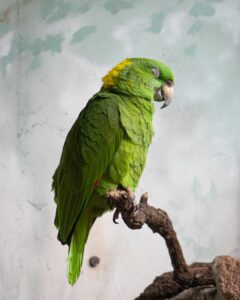
One of the great mysteries of humans is why we dream. Dreaming – as far as we can determine – is a necessary function that suggests the ability to process the mental and emotional receptions of the day. Dreaming itself is a process that occurs during REM sleep segments. REM (Rapid Eye Movement) is a process that usually takes up approximately 25% of your sleep time and represents a period of brain activity that mimics the times when we are awake. The non-REM period of sleep patterns is believed to help with brain waste removal.
The REM period of sleep is a complex process that requires more than just a few words to list its benefits. With that, we jump into the questions: Do birds have REM-states? Do birds experience dreams? How would we know?
A Fascinating Look at How Birds Sleep
The Max Planck Institute has a group named the Avian Sleep Group. They actively study the functions of sleep, its benefits, and other things as they pertain to our loved birds. As they study the reality of bird sleep, they uncover interesting realities that prove that birds of the world produce similar brain functions as we do when we sleep. How they gauge this is an intriguing process that is much more complicated than merely affixing EEG pads to a prone human sleep subject. In their studies, they have discovered amazing avian feats, feats like birds sleeping during flight.
Some birds can sleep with one hemisphere of the brain asleep and the other fully aware, when needed. They can alternately open an eye while still asleep to remain aware of possible predation. If encroaching dangers are spotted, they can come to awareness quite quickly to address an unfolding situation. It is also believed that birds need far less sleep than a human requires. But…do birds dream while asleep?
A combined study with the Max Planck Institute and scientists at the Ruhr University (Bochum, Germany) used pigeons as a basis to delve more deeply into the world of dreaming birds (read more on this 2023 study here). The researchers used infrared video cameras and emergent MRI technologies to observe 15 trained pigeons (trained to comfortably sleep without being disturbed by observant technologies). They were able to observe strong activity in the brain of the sleeping birds that governed visual processing indicating the possibility of an unfolding dream. As well, they were able to acknowledge activity from the body that included wing signals. This gave the researchers the idea that the birds were dreaming of flight or other things that would involve flight.
Bird Dreams
Interestingly, the researchers also noticed activity within the brain’s amygdala region. This region is responsible for emotional recognition, much of it learned. This would indicate that birds likely have emotional responses to what they are experiencing as they dream. But keep in mind, these are but scientific assumptions. As time becomes more progressive in technologies, it is hoped that better equipment and ideas can more fully realize the reality of dreaming in birds, and their REM function to help birds live better lives.
The ongoing studies of sleep, and the roles that dreams play during sleep patterns, are important for us. In time, we will come to a fuller understanding of how we – and our bird friends – mentally function. With such accumulated knowledge, we will be able to better understand the brain’s complex roles in our well-being.
